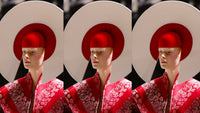Prints add personality and vibrancy to our clothes
In the exciting world of fashion, patterns are a strong way to show your personality, creativity, and stories. From big flowers to fun polka dots, patterns add a bit of your style to your clothes, making them more interesting and unique.
Prints have been a useful feature of fashion for centuries, surpassing trends and generations. Whether you’re looking for a simple polka dot pattern or a playful animal print, they’ve all been around for a while. Prints allow us to express our individuality and showcase our personality, adding visual interest and excitement to our outfits.
Textile printing has a rich history that predates the fashion industry. From ancient times to the present day, the art of textile printing has undergone significant evolution. It all began with hand-carved wooden blocks dipped in natural dyes, creating unique and imaginative patterns. As civilizations progressed, advancements in woodblock printing led to the development of intricate and colorful designs in textiles. The Industrial Revolution then revolutionized the mass production of printed fabrics, making it faster and more efficient. The 19th and 20th centuries saw further innovation with the invention of rotary screen printing and heat transfer printing, allowing for detailed designs and increased production speed.
In the later years of the 20th century, the textile printing industry underwent a remarkable transformation with the advent of digital printing technologies. Digital printing allowed for the direct application of highly intricate and even personalized designs onto fabrics, eliminating the need for traditional printing plates or screens. This breakthrough has greatly expanded the creative horizons for designers and manufacturers, opening up new possibilities for unique and detailed prints.
Moreover, sustainable practices have become increasingly integrated into textile printing in recent years. There has been a focused effort to develop eco-friendly inks, dyes, and printing methods to reduce the impact on the environment. Smart textiles and digital design tools are also playing a significant role in shaping the future of textile printing, offering innovative solutions and endless creative opportunities.

Prints aren't just about fashion; they're also a way to express ourselves. Our choice of prints reflects our personality, mood, and unique style. Styling prints can be challenging, but the key is finding balance.
The beauty of prints lies in their endless variety and diversity. From geometric designs to nature-inspired motifs, prints come in a wide range of forms, each with its own story to tell. Whether it's a bold, graphic print that makes a statement or a delicate, floral print that exudes femininity and grace, there's a print for every mood, occasion, and style preference. The possibilities are limitless, allowing us to experiment, mix, and match.
Behind every print is a world of creativity and craftsmanship. Designers draw inspiration from art, culture, nature, and more to create prints that capture the imagination. From intricate hand-drawn illustrations to digitally rendered patterns, the process of designing prints is a labor of love that demands skill, vision, and attention to detail. Each print is a testament to the designer's artistic vision and passion for storytelling, making it a wearable masterpiece that speaks volumes without saying a word.


(First) Richard Quinn Fall 2018 Scarf Print
(Second ) Energetic Portrait Series by Thandiwe Muriu
Fun Facts About Textile Printing and Natural Dye Methods
Textile printing has a rich history and employs various fascinating methods. Here are some intriguing facts and traditional techniques, including the natural sources of dyes:




1. Block Printing - One of the oldest textile printing methods, block printing involves using carved wooden blocks to apply ink onto fabric. This technique is still popular in traditional crafts in places like India, producing intricate and beautiful designs.
2. Batik - Originating from Indonesia, Batik uses wax to create patterns on fabric before dyeing. The wax resists the dye, resulting in stunning and complex designs. Each piece is unique due to the hand-applied wax process.
3. Natural Dye Sources - Before synthetic dyes, natural sources were used to color fabrics:
- Vegetables: Spinach was used for green, beets for red, and carrots for orange.
- Spices: Saffron produced a vibrant yellow, while turmeric gave a deep golden hue.
- Minerals: Ochre provided shades of red and brown, and lapis lazuli was used for blue.
- Insects: Cochineal, a dried insect, was a primary source for rich red dye.
4. Tie-Dye - Made famous in the 1960s, tie-dye involves twisting, folding, and binding fabric before applying dye. This method creates unique, colorful patterns with a spontaneous and fun feel.



5. Silk Screen Printing - Also known as screen printing, this method uses stencils (or screens) to layer ink on fabric. It's widely used for t-shirts and posters due to its ability to produce vibrant, long-lasting prints.
6. Katazome - A Japanese technique using rice paste resist and stencils to create detailed patterns on fabric. The rice paste prevents the dye from penetrating certain areas, allowing for intricate designs.
7. Plant-Based Dyes - Many plants have been used historically for dyeing textiles:
- Indigo Leaves: Used for a deep blue color.
- Madder Roots: Provided a rich red hue.
These facts highlight the diverse and creative techniques in textile printing, emphasizing the ingenuity and sustainability of using natural sources for dyes. Whether through ancient methods or modern adaptations, textile printing continues to be an art form that combines tradition with innovation.







